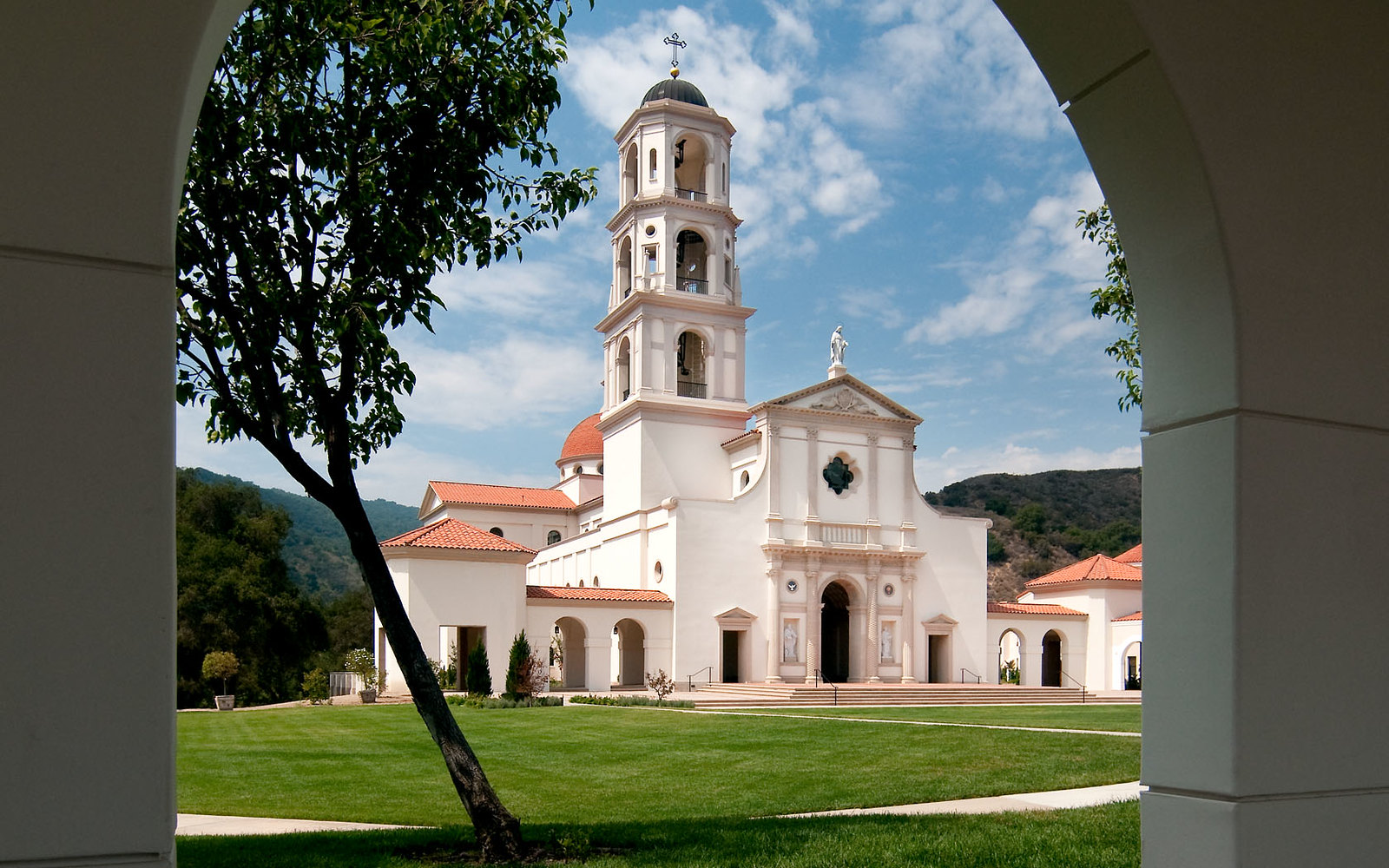Ave Explores Series | Art and Architecture | Week 2
The Church Building as a Sacred Place
by Duncan G. Stroik
We say that a church building is “sacred.” Why do we call it that? Perhaps it is because a church is a place of prayer, a place where we feel inspired, and where we receive the Sacraments. As I write this, public Masses have been suspended in the United States and many parts of the world to stop the spread of a virus. And perhaps we are appreciating the sacredness of our church buildings in a new way as we experience not being able to gather in them for Mass.
Sacred places are given pride of place in all cultures, but especially in Roman Catholicism, due to the presence of Christ in the Blessed Sacrament, and our theology, which sets these places apart for divine use.
When we consider the great riches of our sacred patrimony, what are themes which seem to be consistent across time and county? I want to focus on three: transcendence, directionality, and beauty.
Transcendence

Our Lady of the Most Holy Trinity Chapel,
Thomas Aquinas College in Santa Paula, California,
Photo credit schafphoto.
The experience of transcendence lifts us up beyond ourselves and puts us in awe of the Divine. How can the design of a church express transcendence? Through verticality. Verticality does not just mean how tall the ceiling is, but rather the proportion of the building, which will affect how we experience the space.
Historically, the nave, or main portion of the church, would be at least one and half times as tall as it is wide. Sometimes churches were built twice as tall as they were wide. During the High Gothic period, cathedrals were built that were three times taller than their width, which is why they seem so transcendent.
Verticality can also be expressed in individual elements of a church. Towers and domes on the exterior are visible from afar and mark the presence of the church. A canopy or baldacchino over the altar gives it a special prominence, and an altarpiece with statues or paintings above an altar can draw the eye upwards.
Directionality

Christ Chapel,
Hillsdale College, Michigan,
Photo credit Hillsdale College.
Pilgrimage is a central theme of Christianity, rooted as far back as the Old Testament. We think of Abraham’s journey to a new land, the Israelites’ exodus from Egypt and entrance into the Promised Land, Christ’s journey to Jerusalem and Golgotha, and many references in tradition to the Church as a “Pilgrim People.” All of us are on a spiritual journey and church buildings are signs along the way that assist us in our pilgrimage toward Heaven.
The church building can also be seen as a microcosm of our earthly pilgrimage (CCC, 1198). How can this be expressed in architecture? There should be a sense of procession and a destination where we arrive. A longitudinal nave, often with a series of columns or arches on either side, directs our attention down this main axis.
This procession happens liturgically as the priest and servers enter the church for Mass and proceed to the sanctuary. It happens on other festive and sacramental occasions as well, such as a bride processing down the aisle to her bridegroom. When we enter a church, we can imagine ourselves as that bride on a spiritual procession toward the Heavenly bridegroom who awaits.
The destination of these processions within the church is the sanctuary. It is the central focus of a church building—where the Word of God is proclaimed, the sacrifice of Christ is re-presented on the altar, and where his presence dwells in the tabernacle. Architectural articulation of the sanctuary as the destination include elevating it on steps, using an altar rail to mark the threshold into the sanctuary, and using noble material and fine decoration for the walls, floor, ceiling, and windows, as well as the altar, tabernacle, and other furnishings.
Church buildings should remind us, through their layout and appearance, that our lives are a pilgrimage and that the journey has a destination and a completion.
Beauty

Beauty Chapel of the Holy Cross,
Jesuit High School in Tampa, Florida, Easter 2019,
Photo credit Jesuit High School, Tampa.
Finally, churches should be beautiful. This is both a reflection of God, who is Beauty, and an offering of the best of ourselves. We give God what he is due by giving him our best. Like Mary of Bethany, we pour out the expensive ointment on his feet and adorn our churches with rich materials and high-quality artwork and music.
The artwork can be instructional—for instance, paintings and statues that depict Biblical stories or scenes from the lives of saints. The particular iconography chosen can reflect the patronage of the building (i.e. a church dedicated to Our Lady, the Sacred Heart, St. Joseph, St. Matthew, or any saint) as well as local devotions. The artwork can also be an outreach of evangelization, as the church gives to all an experience of beauty that many seek in a museum or concert hall. But above all, the beauty of a church is meant for the glory of God.
Transcendence, directionality, and beauty are elements that are found universally in church buildings. There is no limit to how these principles have been expressed in various times and places, and we can look to the great examples of the past as we strive to build sacred architecture today.
Download this article as a PDF here.

Duncan G. Stroik is a professor of architecture at the University of Notre Dame School of Architecture and founding editor of the Sacred Architecture Journal.
Based on Your Reading
 '>
'>


